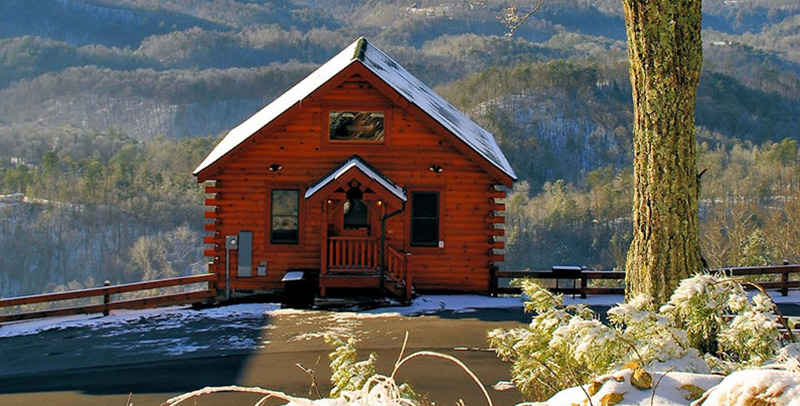Let's be honest: Pets and apartments don't always get along with each other.
Thank you for reading this post, don't forget to subscribe!If you've tried to rent an apartment with a pet dog or cat before, you're probably already familiar with the rent increases and rejections that residential landlords can throw your way.
Between scratches, excessive barking, and the little "accidents" that our furry friends can sometimes make, potential property damage and nuisance are always at the forefront of a landlord's mind when it comes to allowing pets in their property.
But just because landlords in many cities are reluctant to let go of their strict no-pets policy, that doesn't mean you won't find a great pet-friendly landlord somewhere along the way!
In fact, there are plenty of property owners who are more than happy to open their doors to great tenants with adorable pets, and when we take short-term rentals into consideration, the amount of pet-friendly accommodation rises dramatically.
Contrary to popular belief, there's a lot of benefits to making your rental property pet-friendly, and if you're one of the vacation rental owners who is just realizing the profit-focused benefits of allowing pets during your guests' stay, you've definitely come to the right place.
Let us walk you through all the considerations you need to make before turning your rental property into a safe haven for pet owners and their animals. This includes how to kickstart the process and market your pet-friendliness right — pet-related damage is not all that comes with relaxing your pet policy!
Why make your vacation rental pet-friendly?
First things first, let's tackle the number one question in the mind of every risk-averse property manager: Why should you make your rental property pet-friendly in the first place?
Allowing pets into a residential property or vacation rental is generally considered a huge risk.
As we mentioned before, it's quite hard to come across landlords that are open to letting animals into their rental properties, as they are often concerned by the possibility of expensive pet damage and reluctant to even work in an additional pet deposit to give prospective tenants a chance.
But here's what you probably don't know: There's a lot of extra profit to be made with pet-friendly rental properties, and a lot less damage than concerned landlords might have you believe!
According to a recent report, in fact, pets are far from the most costly source of property damage: Only 9% of pets are believed to cause any damage (adults and children seem to lead the way in that department ), and when they do, the total average cost of repairs only amounts to $191.
Despite dogs and cats being mostly a safe bet for the rental market, only a tiny 8% of multi-family rental housing is free of all restrictions on pets, such as restrictions on breed and size.
Vacation rentals, on the other hand, tend to be a little more open to pet owners and their pets, with close to 15% of listings allowing dogs and cats across the United States.
But while the number might look impressive compared to the many rental units imposing restrictions on pets, it pales in comparison to the whopping 60% of hotels boasting a pet-friendly policy.
All in all, experts agree that if you're not instituting a clear and lenient policy on pets, you're missing out on hundreds of profitable opportunities and only encouraging pet owners to sneak in their pups and kittens instead — but before you settle on a decision, let's take a closer look at all the pros and cons of allowing animals into your property first...
Benefits and risks of being pet-friendly
So, what are the biggest risks and the biggest benefits of making your property open to dogs and cats?
The main drawback of creating a pet-friendly rental is, of course, the wear and tear that comes along every claw, hair, and sharp tooth: While pet-related damages are definitely not as extensive and costly as most property managers fear, there's no denying that just a little bit of shedding can increase your cleaning bill overnight. Fluffy, large dogs are a recipe for disaster when it comes to keeping your property in tip-top shape, but leaving the cleaning to an experienced company with streamlined pet-cleaning protocols can easily take care of these issues.
Strong odors are also a concern for many rental owners, as even the cleanest dogs will end up leaving a significant trace when staying at your property for a couple of days. Once again, you'll want to make sure your cleaners know how to handle these issues, and accounting for a little bit more cleaning time between guests will take away most of your worries!
Now, if you're planning on making a long-term, residential rental pet-friendly instead, the risks are likely to be more significant: Your tenants' pets rights end up being part of that 9% of animals that do cause damage to your property, so you want to make sure you're properly vetting the pet owner beforehand and applying pet fees to your contract to make up for any accidents.
And what about the benefits side of things? Well, if additional revenue and marketability sound attractive, you might want to consider allowing pet owners and their furry companions into your vacation rental!
Pet-friendly rentals are much harder to come by, so listing pet-friendly as an added feature will make you stand out from the crowd and attract more guests all year round.
On top of that, pet-friendly accommodation attracts higher fees, adding up to $30 "pet rent" per stay to pet owners, plus higher security deposits to cover all pet-related accidents.
When putting all these extra charges together, it's clear that vacation rentals can make considerable profits by establishing a pet-friendly policy, as the cost of any extensive hair removal, furniture replacement, and even the odd scratch here and there will be covered by the higher fees!
How does a multi-family pet-friendly pet policy increase revenue?
When planned correctly, pet-positive short-term stays can provide more revenue and more guests without having to embark on expensive remodeling, but what are the consequences of relaxing a no-animal policy if you own multi-family properties?
Well, the first consideration landlords need to make is that tenants with pets are not that rare in the United States: As much as 85 million families in the country have at least one pet, meaning that as much as one-third of potential tenants will have a dog or a cat as part of their family.
In fact, the number of pet owners has only gotten higher as a result of the pandemic!
This means that by rejecting all potential tenants with pets from renting your multi-family home, you're possibly giving up on a lot of responsible, family-oriented renters, and yes, giving up on more money as well.
The booming pet-owning tenant market is an incredible source of additional revenue: You'll be reducing costly vacancy periods by making your unit more appealing to a marginalized market, you'll be charging solid security deposits to cover all damages, and you might even institute a monthly pet rent to make sure you won't incur any losses.
Keep in mind, however, that having a pet rent or charging a higher rent to pet-owning tenants will turn some renters away, restricting your access to this crucial market.
As an added benefit, you also need to consider that a pet-owning family or tenant usually make for a more responsible renter, and even more crucial when it comes to increasing revenue, pet owners are more likely to renew their lease compared to pet-free tenants — frequently moving with pets is no walk in park!
But don't just take it from us: Crunch the numbers yourself and see what happens!
How to make your rental pet-proof
Now that you know why opening up your doors to pet-owning renters and their pets can be such a revenue-boosting move, let's have a look at what steps you need to take if you want to turn your short-term housing into a pet-proof and pet-loving accommodation.
Get your rental ready for furry visitors
The first thing you should do is get your property ready for pets, ticking all the boxes in your to-do list from investing in feeding bowls to getting rid of problematic flooring, like carpet, and replacing it with pet-proof flooring instead.
Changing your floors is going to be the most expensive and time-consuming remodeling you'll have to do if you want to make sure your floors are easy to clean and odors are easy to get rid of, so start looking at cost-efficient options like vinyl, linoleum, laminate floors, hardwood floors, and porcelain tiles as soon as you can.
You should also make sure you're using the right paint and paint color to protect your home from any damage, switching up darker finish paints for semi gloss instead.
When it comes to restricting some areas of the house and protecting your most fragile furnishings, nothing keeps a curious pet at bay more than a convenient doggie gate! You can find many great brands that don't require permanent fixings, so do your research to find the perfect gate or crate to fit your interior décor and architecture.
Revise your cleaning protocol
If you're going to be accepting cats and dogs, you should also make sure you have briefed your cleaning company on the new protocols they'll need to follow to keep the house in tip-top shape.
You might want to reach out to a new cleaning company with plenty of experience in cleaning pet-friendly apartments or simply ensure that your cleaners are using the right products and equipment to get rid of hair, unpleasant odor, and light scratches.
Remember that it's not all about damage: Future guests might have serious allergies to pets, so make sure you're allocating more time to cleaning that before by implementing earlier check-outs and later check-ins as well!
Consider a pet deposit
Whatever your pet protocol might be, make sure you are spelling out everything clearly on your Airbnb, Vrbo, or website page, as well as including all pet-related information in your confirmation emails.
If you are applying extra charges, for example, a larger deposit or a nightly pet cover fee, make sure to explain everything at length beforehand and mention what kind of damages or nuisances might lead guests to lose their deposits.
As a general rule of thumb, it's usually better to increase the deposit fee instead of adding a new extra charge for animals, and if you want to reduce risks even more, try asking for pet references: Well-behaved dogs will give you absolutely nothing to fear!
Don't be afraid to invest in the extras
With doggie gates, pet-proof flooring, and paints all taken care of, you'll want to add in a little extra comfort to your furry guests to take the marketability of your pet-friendly property to the next level.
Consider investing in safe, eye-catching feeding bowls, pouches of pet food, treats, sofa covers, dog beds, a few toys, pet washing stations, and waste bags. While these are far from essential to guarantee happy guests and a clean home, adding in a few unexpected extras will do wonders for the marketability of your stay, ensuring great reviews and more pet enthusiasts flocking to your property, boosting your revenue in return!
Market your property to the right pet owners
Finally, you'll want to make sure you're marketing your pet-friendly stay right, going into detail on the dog-friendly amenities available in your neighborhood (a simple dog park in the area can go a long way!) as well as on the home features you have provided to pet owners and their adorable friends.
When you market the pet-friendliness of your short-term rental as the main draw of the stay, you can already weed out the more irresponsible pet owners and open your doors to those who truly care about their dog and their surroundings instead.
Responsible pet owners are more likely to be traveling with their dog anyway, and if you ask about references, veterinary records, and their pet's obedience training before accepting new guests, you'll minimize any chance of trouble and boost your profits without any extra effort!
Pet-friendly property management
So, are you ready to embrace a brand-new market full of responsible and high-paying customers?
Despite the decade-long stigma you'll find in most of the industry, there's no denying that pet-friendly stays are on the rise, so getting ahead of the curve will only help you in the long run!
A clear pet agreement with heftier deposits, cleaning protocols, and great marketing is not all there is to pet-friendly property management, so if you want to learn more about the topic, why not check out one of our latest podcast episodes?
From the basics of short-term rental investing to tips on how to maximize your income, you'll find everything you'd ever need to know about the industry in our podcast and blog — success as a short-term rental owner has never been closer!



